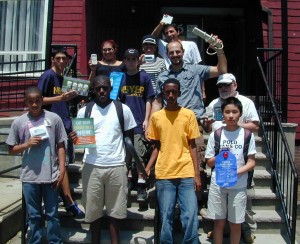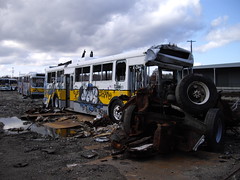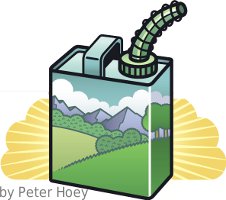
Audit team members prepare for conducting home energy audits.
Cambridge residents looking to save on utility bills for electricity and heating can request a free audit this summer from the Youth Energy Audit Partners, a collaborative project of HEET (Home Energy Efficiency Team) and the Cambridge Community Center. Three audit teams will install energy and water-saving devices, calculate the dollar savings from these devices, and advise homeowners and tenants on the costs and benefits of additional energy efficiency work and how to obtain rebates and contractors. On average, households can realize a 10%-15% savings on electric and heating bills, or an estimated $200 a year by implementing simple measures.
Each team is led by a trained supervisor, and two high school students employed by the Mayor’s Summer Youth Employment Program. The project is made possible by material resources and advice contributed by the Cambridge Energy Alliance, and grant awards from Constellation Energy EcoStar and the Cambridge Agassiz Harvard Fund, which serves as a catalyst for innovative programming to address emerging community needs.
To sign-up for a free audit for home energy savings , contact:
Ms. Doreen Wade, Cambridge Community Center, Tel. 617-547-6811
See also CEA and NSTAR canvass Cambridge businesses










